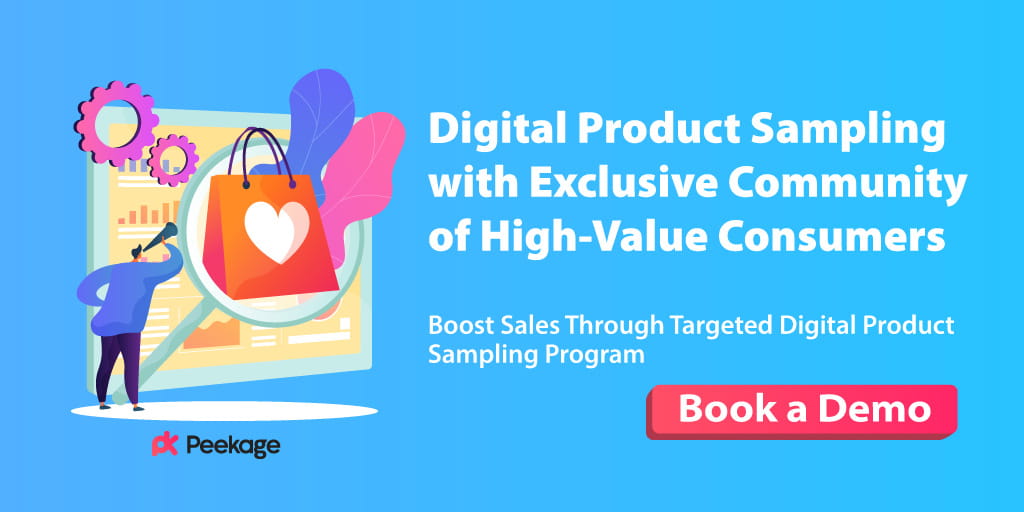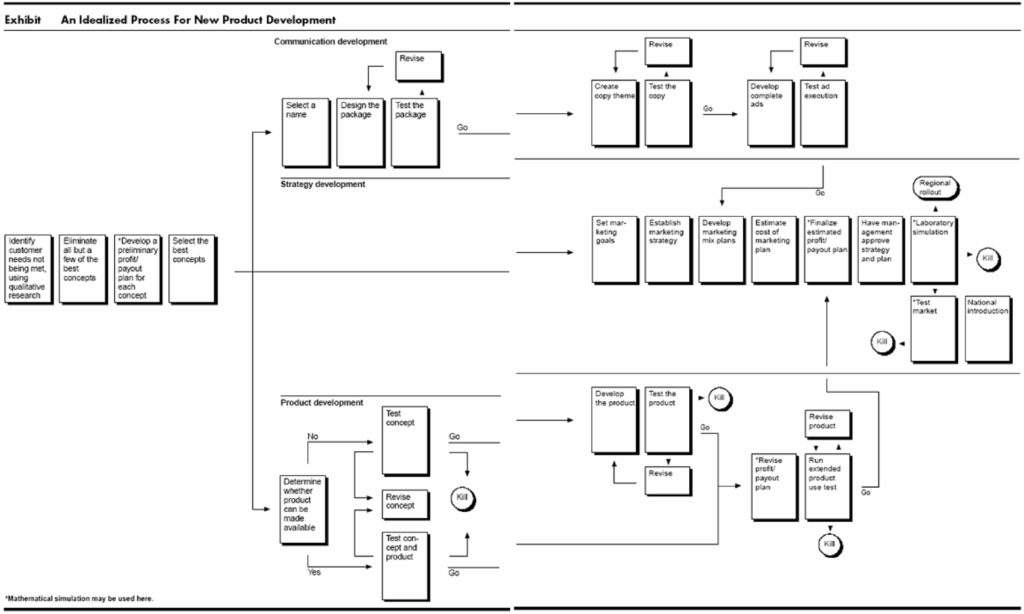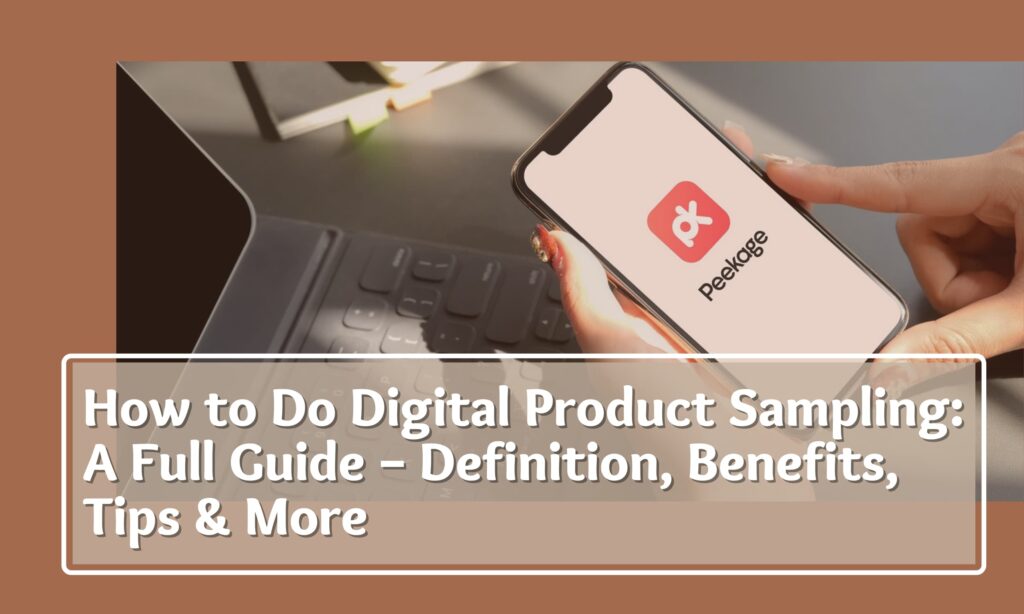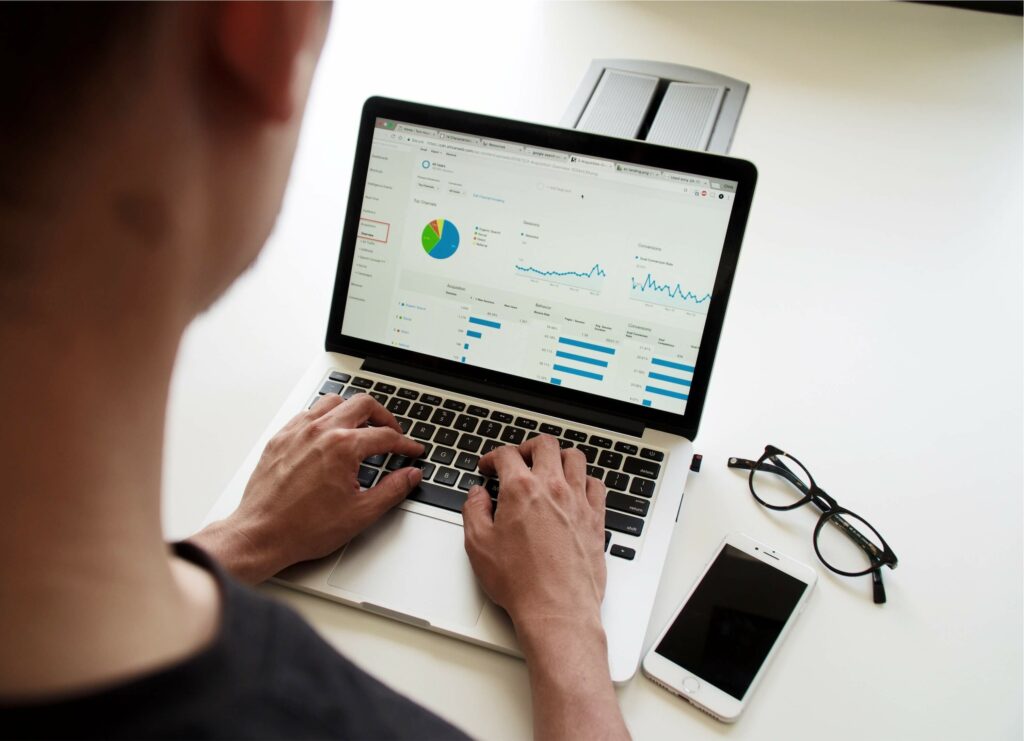Product testing (Aka: consumer testing or comparative testing) is the process of measuring the properties and likely performance of products with a target audience. Using product testing, businesses collect qualitative and quantitative information about consumers' potential usage/consumption behavior, preferences, and reactions to a product.
It usually involves giving product samples to consumers to try. There are various reasons brands do so before launching a new product. It can be consumer insights research, brand awareness, brand activation, sales promotion, or other marketing and branding activities.
This article will go over what product testing is, how it helps you market your product, what a step-by-step product testing process looks like, and how to optimize it to get more accurate results.
Peekage solutions: Sampling programs
What exactly is product testing?
Product testing is a process where companies evaluate their products by gathering feedback from target consumers to ensure quality, functionality, and market fit.
Product testing involves having a small group of your target audience try your product, provide feedback on their experience, and observe their behavior while using your product sample.
Before releasing your product to the market, you should test it to see if it is well received by its intended audience and performs as expected.
A company can choose its ideal product testing approach based on its product type, budget, and objectives. However, the ultimate goal is to obtain insightful feedback from users to enhance and refine the product.
In other words, product testing enables businesses to direct their resources in the appropriate direction and create a product that will last in the market for a long time.

How does product testing help market your product?
- Builds trust through consumer validation.
- Identifies potential improvements.
- Enhances marketing strategies with real-world insights.
At the core of every successful product marketing strategy is a message that the audience can relate to, a message that speaks directly to the target audience using the same language that they do.
Product testing helps you understand your target audience better, what they like or dislike about your product, how they view it, and how they use it to solve their problems.
The great thing about product testing is that it helps your product development and marketing efforts focus on what matters the most - the user.
Here are a few ways an effective product testing process can help your product development and marketing:
- Collecting insightful feedback from consumers on how well they think the product is
- Catching weaknesses and resolving them in the early stages
- Estimating how consumers will receive and welcome the product in the future
- Making sure the marketing channels work efficiently
- Preventing bad reputation on a large scale
- Preventing customer dissatisfaction or complaints
- Creating brand or product awareness

Also Read: The Ins and Outs Of Product Sampling Marketing: The Ultimate Guide To Enhancing Your Brand
Seven steps to getting your next product testing campaign off the ground
- Define objectives.
- Choose target audiences.
- Design the testing method.
- Conduct the product testing process.
- Gather feedback.
- Analyze results.
- Implement improvements.
Products are tested in various stages of development. The two final test phases before product release are called acceptance testing:
- Alpha testing is the in-house team's final testing to see if the features and functions work as expected. The results help the product team decide whether the product is ready for beta testing.
- Beta testing is performed after Alpha testing and involves the product getting tested by a limited number of actual users in a real environment. The goal of the beta testing process is to find the product defects and flaws to fix them before the release. Therefore, user feedback in beta testing is crucially important for companies.
Depending on your approach to product testing, the following step-by-step guide can be applied to both Alpha and Beta testing.
Also Read: Rapid Product Testing Sprints Through Product Sampling
Step 1: Choose the products or concepts you want to test
Depending on your product testing strategy, you might want to test more than one product, version, or concept or use competitors' products for comparison. When doing so, try to choose products at the same development stage as it allows for more accurate performance comparison.
Step 2: Determine how product testing fits into your overall product development approach
There are different ways of going about developing a new product. The two main approaches are waterfall and agile product development. Each approach has its own testing stages as follows:
- Waterfall: At the beginning of the development, the product team performs initial market and concept testing to identify the market and consumer needs and expectations. The next and final testing phase occurs after the completion of the product, where the team tests the product for defects and assesses its performance.
- Agile: with this method, the project is broken down into short development cycles or sprints. At the end of each sprint, users test a working version of the product and provide feedback which the agile team uses to enhance the product.
Step 3: Define your testing metrics
To define your test metrics, first, you need to know the qualities of a great product. Then, you can gauge the users' response to your product and whether it satisfies their expectations and needs.
Metrics also impact the accuracy of the tests in that the more specific your metrics are, the more accurate your results will be.
Here are some of the metrics you can use for product testing:
- Usefulness: Does it solve the problem it was intended to solve?
- Ease of use: How effortless is it for people to use it?
- Visual design: Does it look good?
- Price for Value: Is it too expensive or too cheap?
- Quality: Does your product seem high quality and reliable?
- Marketing efficiency: Does your target audience relate to your marketing message?
- Innovativeness: What is new about your product?
- Purchase intent: Would your audience be willing to pay for your product?
Step 4: Reach your target audience
Create a clearly-defined model audience or sample pool based on geography, demographics, age, income, profession, etc. The test group should closely represent your actual customers.
Next, you need to find ways to reach or recruit your audience to conduct the tests. Some cost-effective ways you can do so are leveraging your existing website and social media audience, ads, and user testing and product sampling platforms.
Step 5: Pick a testing environment
The setting in which product testing is performed can depend on many variables such as the type of product, testing method, number of participants, budget, and testing period. But testing models are divided into two general categories when it comes to the environment:
- Central Location Testing (CLT): With this approach, consumers use the product in a controlled setting inside a central venue - i.e., a shopping mall or a laboratory - and then provide their feedback.
- In-Home Usage Testing (IHUT): Participants use the products delivered to them at home and share their experiences with the team.
Step 6: Conduct the test
Numerous product testing methods are available, such as A/B testing, concept testing, and market testing. The product type, stage of development, test objectives, and metrics are all elements that influence the testing technique you choose.
Use surveys, observation, and diary study methods to collect user feedback data before, during, and after the test.
Also Read: Ultimate Guide to Consumer Research Types
Step 7: Analyze and integrate
Once you've collected the participants' feedback, it's time to conduct a proper data analysis. This allows you to turn the raw data into actionable insights informing your product development and marketing decisions.
Rapid product testing to build a winning product
When it comes time to launch a new product, fast product testing can be a game-changer. Rapid product testing allows you to test your product at each critical development sprint, saving you time and money.
Peakage is a platform that helps you do just that. A Personalized product sampling platform allows consumer brands to conduct targeted at-home product trials. Our program sorts through 200+ shoppers' attributes and categorizes them based on their buying patterns and interests.

Peakage performs customized customer surveys and analytics on users who have tested your product or service. You will receive valuable feedback that will assist you in discovering actionable insights that can inform strategy, messaging, product positioning, and more.
If you want to kickstart your product testing campaign, book a free consultation with one of our experts.
Seven tips to optimize your product testing strategy
By now, you know how impactful product testing can be when developing a new product and the steps involved in designing a product testing plan.
To conclude this, let's provide a few tips on optimizing your product testing process to make the most of it.
- Incorporate product testing as early as possible in the product ideation and development process.
- Make sure your data capabilities are on point; product testing is all about turning data from user feedback into actionable insight that guides development.
- Ensure that your test group is big enough to be statistically significant.
- Take special shipping and storage considerations for refrigerated or perishable physical products.
- Give yourself some leeway when setting the process timeline; unforeseeable events can happen at any time.
- You can ask the participants to record their interaction with the product for observation purposes; sometimes, people behave differently from what they say.
- When using a survey to collect feedback, try to limit the number of questions to 30 or less. Shorter questionnaires are more likely to keep people's attention.




